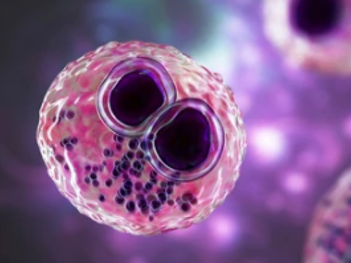Metabolomics in HCMV Infection
Cytomegalovirus belonging to the family of herpesviridae viruses is an endemic and ubiquitous DNA virus. As a herpesvirus, human cytomegalovirus (HCMV) can cause birth defects and long-term sequelae. The viruses induce an alteration of the host cell metabolism to fulfill various physiological functions required for its reproduction. Metabolomics has emerged as a powerful approach in the investigation of HCMV infection, including understanding the effects of HCMV infection on metabolism and identifying metabolic profiles for diagnosis, severity, and prognosis of this virus. Early diagnosis based on metabonomics, especially in asymptomatic patients, could lead to more targeted management strategies for HCMV-infected patients.
Human cytomegalovirus (HCMV)

HCMV is a ubiquitous pathogen that affects more than half the world's population. Similar to other herpesviruses, the virus becomes latent after the primary infection and can establish lifelong infection. Despite being asymptomatic in immunocompetent adults, HCMV can cause serious diseases in immunocompromised populations, individuals with a secondary viral infection, and patients receiving immunosuppressant therapies. In addition, as a leading cause of virus-mediated birth defects, HCMV is associated with hearing loss, retinitis, vision loss, microcephaly, severe mental and cognitive impairment, etc. HCMV has a broad cellular tropism, namely, the virus can infect and replicate in multiple cell types (e.g. epithelial, fibroblasts, neural progenitor cells, and smooth muscle), which may contribute to systemic spread and pathogenesis.
Metabolomics and HCMV
Dynamics of the cellular metabolome during HCMV infection
As an endemic and ubiquitous DNA virus, cytomegalovirus is one of the most studied and characterized viruses. As early as 2006, researchers had investigated the effect of HCMV infection on host cell (human fibroblasts) metabolic composition using liquid chromatography-tandem mass spectrometry (LC-MS/MS). 63 different intracellular metabolites were measured during HCMV infection. The study demonstrated that HCMV infection can induce a large increase in metabolites, especially metabolites associated with the tricarboxylic acid cycle (TCA), glycolytic flux, nucleotide and fatty acid biosynthesis. The following work performed a comparative investigation on the metabolic effect of HCMV and herpes simplex virus-1 (HSV-1), across both epithelial and fibroblast host cells. Researchers measured the levels of about 80 cellular metabolites during viral infection and found that HCMV profoundly increase the level of TCA compound, fatty acids, and nucleotides biosynthesis, consistent with previous research.
So far, we have learned that HCMV is highly dependent on host metabolic regulation, particularly glycolysis and glutaminolysis. During viral infection, glucose uptake, consumption, and glycolytic flux have been significantly enhanced. Glycolysis likely contributes to HCMV replication involving viral DNA synthesis and virus production. In addition, glutamine uptake and glutaminolysis are increased during infection, and glutamine metabolism is another major component of HCMV replication.
Metabolomics for the management of infants with HCMV infection
Since neonatal congenital infection is the most important clinical manifestation of HCMV infection, researchers focus on the impact of HCMV congenital infection on the urinary metabolome. Urine contains a large number of metabolites and can be noninvasively collected, making it a particularly suitable biofluid for metabolomics studies in pediatric, especially for neonatal conditions. Reports on the effects of HCMV congenital infection in urinary metabolome have been reported. In an early study, 1H-NMR spectroscopy coupled with multivariate statistical methods were employed to identify the discriminant metabolites from congenitally HCMV-infected to uninfected controls. Several metabolites showed the potential to characterize sample clustering, including myoinositol, 3-hydroxybutyrate, 3-aminoisobutyrate, glycine, creatine, betaine, and taurine. A recent metabolomics study, similar to the previous research, demonstrated that differentiating metabolites are betaine, glycine, alanine, and dimethylamine, highlighting 1H-NMR urinary metabolic profile as a promising tool for the management of infants with HCMV infection.
Creative Proteomics has been developing metabolomics detection methods and data analysis methods for many years. Based on professional scientists and advanced platforms, we can accelerate our customers' projects to the next level. For more information on how we can help you, please feel free to contact us.
References
- Fanos, V., et al. (2013). "Urinary metabolomics in newborns infected by human cytomegalovirus: a preliminary investigation." Early human development, 89, S58-S61.
- Noto, A., et al. (2014). "Metabolomics technology and their application to the study of the viral infection." The Journal of Maternal-Fetal & Neonatal Medicine, 27(sup2), 53-57.
- Frick, M. A., et al. (2019). "1H-NMR urinary metabolic profile, a promising tool for the management of infants with human cytomegalovirus-infection." Metabolites, 9(12), 288.
Related services
* For research use only.

